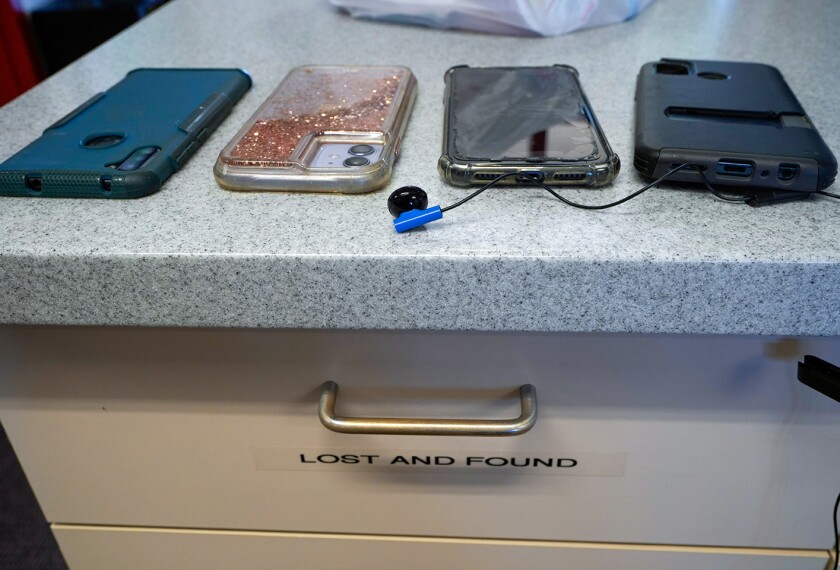Corrected: A chart in a previous version of this story contained incorrect percentages for where educators say students should be allowed to use cellphones.
To ban or not to ban? This question has been front and center for many schools recently as they strategize how to address students’ ubiquitous use of cellphones.
With nearly 9 in 10 teens 13 and older possessing a smartphone, these devices have become a major source of distraction and disruption in schools, especially when students’ online arguments spill over into in-school arguments and physical fights.
And many educators and school support staff feel that students’ constant access to social media on their smartphones is harming their mental wellbeing and hurting their ability to learn. Some educators go so far to say that students are addicted to their devices.
Nearly a quarter of teachers, principals, and district leaders think that cellphones should be banned from school grounds, according to a recent nationwide survey conducted in September and October by the EdWeek Research Center.
But, overall, educators are divided on the issue.
“We should be learning to manage cellphones in the classroom. They are here to stay,” one educator said in the survey. “BUT they are the biggest distraction.”
Said another survey respondent: “We recently banned cellphones. Previously, they were allowed during passing time and at lunch. However, they had taken over instructional time. Students would get out their phones without thinking and teachers would have to spend as much time redirecting as they were teaching. That, or have a power struggle over confiscation.”
But schools face headwinds from students and parents—many of whom want to be able to reach their children throughout the day—when they try to restrict students’ access to cellphones during the school day.
And as the charts below show, in many cases there’s a yawning gap between what students are allowed to do and what educators think would be best for schools.
For example, nearly three-quarters of teachers, principals, and district leaders say that high school students in their schools and districts are allowed to use their phones during lunch, but only half believe that should be permitted.
The survey also found that a significantly larger share of teachers are in favor of banning cellphones on campus than district leaders. Principals were more in line with teachers than district leaders on that decision.
The following charts show where students are allowed to use cellphones on campus, where educators think phones should be permitted, and how teachers, principals, and district leaders differ on the issue of an all-out cellphone ban.


Data analysis for this article was provided by the EdWeek Research Center. Learn more about the center’s work.






